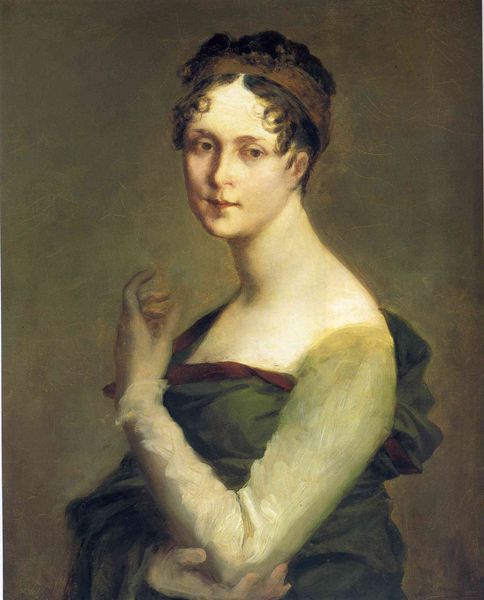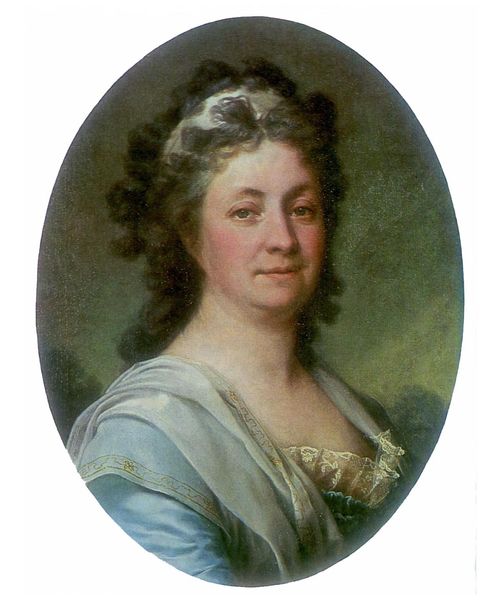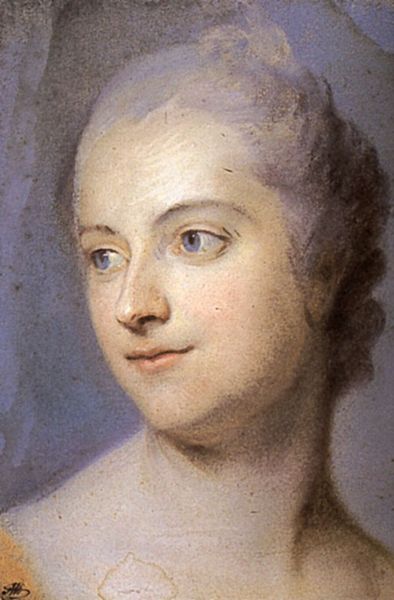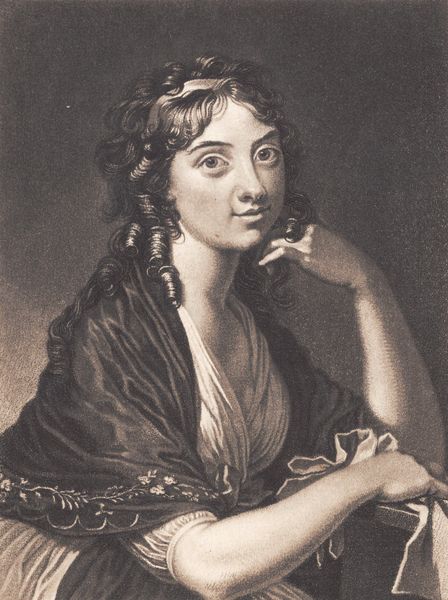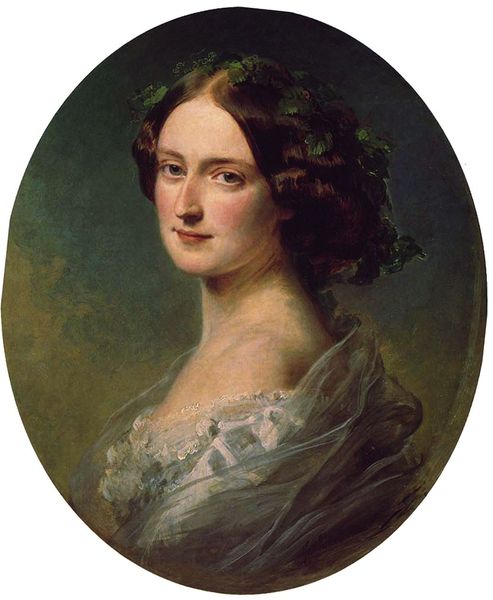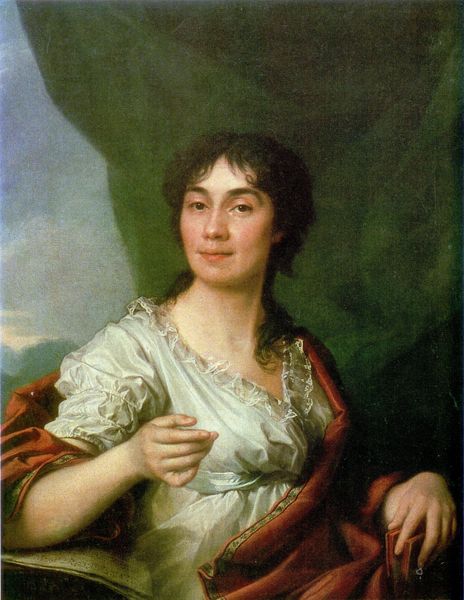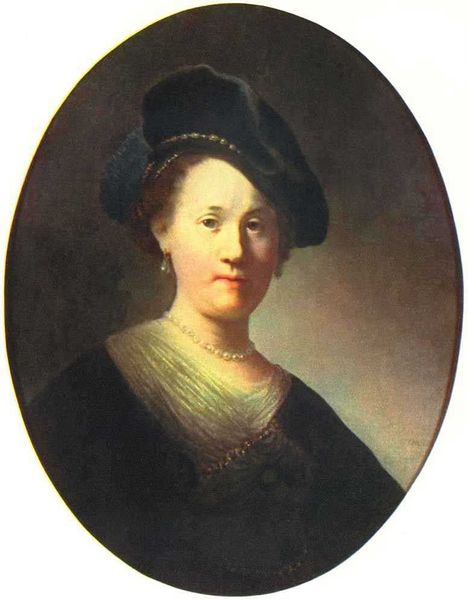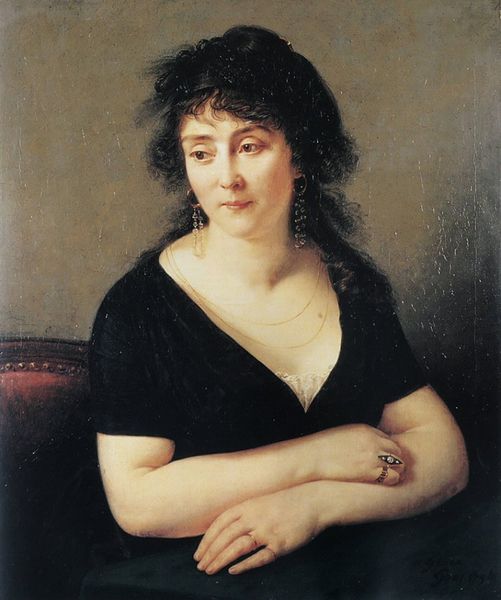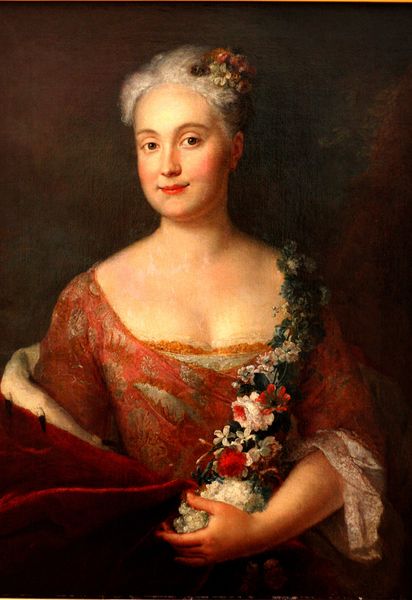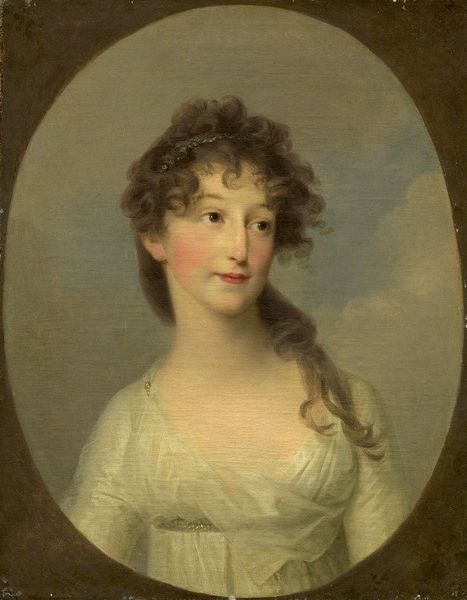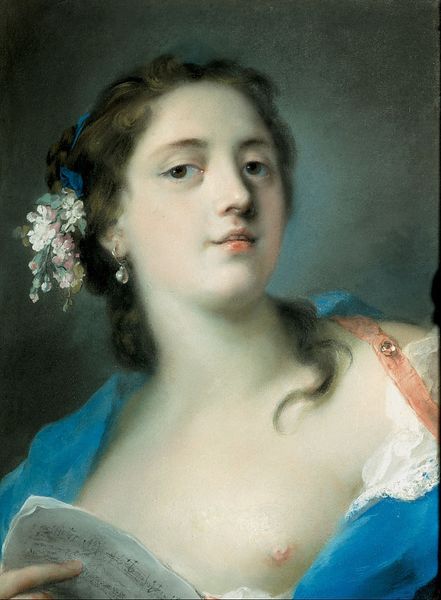
painting, oil-paint
#
portrait
#
painting
#
oil-paint
#
romanticism
#
realism
Dimensions: 67 x 55 cm
Copyright: Public domain
Curator: Here we have Kiprensky's *Portrait of Golitsyna*. Editor: My first impression is that there's a vulnerability conveyed, despite the apparent affluence and status suggested by her attire. The gaze is soft, almost imploring. Curator: It's a fascinating character study when you consider the painting within the social context of early 19th-century Russia. Portraits like these were potent statements, markers of social standing but also opportunities for personal expression, even within the rigid constraints of the Tsarist court. The sitter was representing an alignment to the elite, a declaration that she belongs, is worthy of being here, while also being subject to scrutiny as a member of that exclusive community. Editor: Yes, the gaze meets yours directly and invites interpretation. While, to contemporary viewers, it's the mark of status, I would posit that paintings like these functioned in their time in complex ways—signaling power, definitely, but also, and perhaps even more crucially for the subject, constructing and solidifying her sense of self in a patriarchal world. How do we view the female subject in a patriarchal time where access to power or privilege depends on alignment to men or social constructs? I wonder who she felt that she was in this world, not just what her title might be. Curator: Exactly! Consider how artistic patronage by powerful women influenced the aesthetic and political landscape. Often we are only allowed to consider their status or lineage, without appreciating how women’s contributions impact the direction of an artist’s trajectory. It allows a further appreciation of art and access. Editor: The way the red shawl drapes and highlights her exposed neckline is particularly striking too. There is sensuality. The fact it doesn’t quite match the darkness of her jacket, makes it all the more eye-catching. The brushstrokes lend a certain weight to her features as well, it does a marvelous job. And look at the hair; even that seems a statement of sorts—softly rebellious perhaps, in contrast to the rigidly formal styles that could have been chosen. It makes the woman almost human. Curator: Definitely, an early-Romantic interpretation that provides both commentary and access. Kiprensky manages to offer both an intimate glimpse and social commentary here. Editor: Indeed. I am leaving here now wondering more about the female subject herself, not just the portrait’s provenance. I can admire its beauty, technical accomplishment, but it prompts even bigger questions about power, the role of women in court, how much agency this particular subject possessed in defining how her own story would be told.
Comments
No comments
Be the first to comment and join the conversation on the ultimate creative platform.

